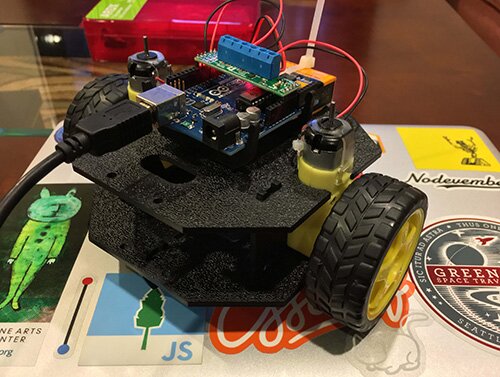Creaming in Baking.
1.10.2017
Creaming is one of those weird terms you see in baking recipes. It does have a specific meaning though, and doing it correctly can really improve your baked goods.
Creaming means mixing the butter (or the main fat of the recipe) and sugar (white or brown) until "light and fluffy". This process puts a bunch of tiny bubbles into the proto-cookies, which help with leavening. You should see the volume of the mixture increase by about a third, and has lightened in color, due to all that air. You shouldn't be able to see any sugar granules, but you should be able to feel them if you rub the creamed mixture between thumb and forefinger. Creaming will take somewhere around 3 minutes with a mixer (I like to use a paddle with a scraper or edge beater in my stand mixer), and just about forever if you're mixing by hand.
Toll House Cookies - Half Butter Test.
3.10.2013
I tried , with half the butter and no nuts. They turned out pretty well, but there was some funny separation in the 3rd and later batches to get into the oven. Next time, I'll chill the dough while the first cookies are baking.
Does anyone actually make them with the nuts?
Cookies For Science.
12.15.2011
I have been struggling recently with the question of how old can baking soda get before it's inappropriate for baking. I decided to do some science - and baked up these cookies last Sunday night.
 This picture shows the cookies made using the old baking soda, after having cooled on the rack for about half an hour. They're a little flat; they're tallest where the chocolate chips provide structure for the dough.
This picture shows the cookies made using the old baking soda, after having cooled on the rack for about half an hour. They're a little flat; they're tallest where the chocolate chips provide structure for the dough.
 This picture shows the cookies made the new baking soda (sorry for the poor focus). These cookies are puffy; the dough holds it's own structure.
This picture shows the cookies made the new baking soda (sorry for the poor focus). These cookies are puffy; the dough holds it's own structure.
 A cookie with old baking soda is on the left, and a cookie with new baking soda is on the right.
A cookie with old baking soda is on the left, and a cookie with new baking soda is on the right.
 As before, the cookies with old baking soda are on the left, and the cookies with new baking soda are on the right. The stack on the right is clearly much taller.
As before, the cookies with old baking soda are on the left, and the cookies with new baking soda are on the right. The stack on the right is clearly much taller.
The Results
The results were clear to me - the old baking soda delivered a significantly worse cookie. The cookies made with old baking soda were too flat (they were puddles of dough clinging to chocolate chips), and dried out in just 2 days. The cookies with new baking soda were cookie shaped; and still tasty 4 days later. I hereby strengthen my resolve to buy new baking soda every 6 months.
The Recipe
Here is the recipe that I used:
- 11 1/4 oz all purpose flour
- 1 teaspoon baking soda
- 1 teaspoon salt
- 1/2 cup butter (room temperature)
- 1/2 cup shortening
- 3/4 cup granulated sugar
- 3/4 cup packed brown sugar
- 2 large eggs
- 1 teaspoon vanilla extract
Stir flour, baking soda and salt together. Cream the butter, shortening, white and brown sugar. Add eggs, one by one, to creamed mixture and beat until incorporated, then add vanilla. Gradually mix in flour mixture. Dish rough tablespoons of dough onto a baking sheet and baked for 9.5 minutes at 350° F (until golden brown and delicious). Allow cookies to set on cookie sheets, and to cool on wire racks.
Test Methodology
I prepared two mixtures of 5 5/8th oz flour and 1/2 teaspoon salt, and added 1/2 teaspoon of each version of baking soda to each mixture. I prepared two mixtures of 1/2 teaspoon of vanilla extract and 1 egg for each batch of dough.
I creamed the entire recipe of butter, shortening and both sugars together, weighed the total amount (with the bowl zeroed out), and spooned material out of that bowl until was split in half. While finishing the dough and baking, I stored the creamed mixtures and dough in the refrigerator.
The dough with the old baking soda got proper chocolate chips. I figured this would give them the best chance at being tall; as the chips provided some height. The dough with the new baking soda got chopped bar chocolate, which contributed to its darker color (and did help me to tell the cookies apart.)
Science is re-producible, so I urge you to preform your own experiments!
Cook's Illustrated & Adult Learning Theory.
5.3.2010
I received a subscription to Cook's Illustrated for my birthday last year, an excellent instructional magazine for cooks.
For each recipe, Cook's Illustrated first devotes an entire page (sometimes two) to the challenges that the author overcame in developing and testing this recipe, which I initially thought was all worthless jibber-jabber. I've since realized that the whole point of the play-by-play recipe evolution story is to tell me why certain arcane steps are necessary. By more fully engaging my brain, it's helping me not to skip a step in the process they've outlined. By involving me, I learn.
Another huge advantage of Cook's Illustrated is that the authors are always kind enough to always provide the weight equivalent for flour in baked good recipes.

 This picture shows the cookies made using the old baking soda, after having cooled on the rack for about half an hour. They're a little flat; they're tallest where the chocolate chips provide structure for the dough.
This picture shows the cookies made using the old baking soda, after having cooled on the rack for about half an hour. They're a little flat; they're tallest where the chocolate chips provide structure for the dough. This picture shows the cookies made the new baking soda (sorry for the poor focus). These cookies are puffy; the dough holds it's own structure.
This picture shows the cookies made the new baking soda (sorry for the poor focus). These cookies are puffy; the dough holds it's own structure. A cookie with old baking soda is on the left, and a cookie with new baking soda is on the right.
A cookie with old baking soda is on the left, and a cookie with new baking soda is on the right. As before, the cookies with old baking soda are on the left, and the cookies with new baking soda are on the right. The stack on the right is clearly much taller.
As before, the cookies with old baking soda are on the left, and the cookies with new baking soda are on the right. The stack on the right is clearly much taller.




